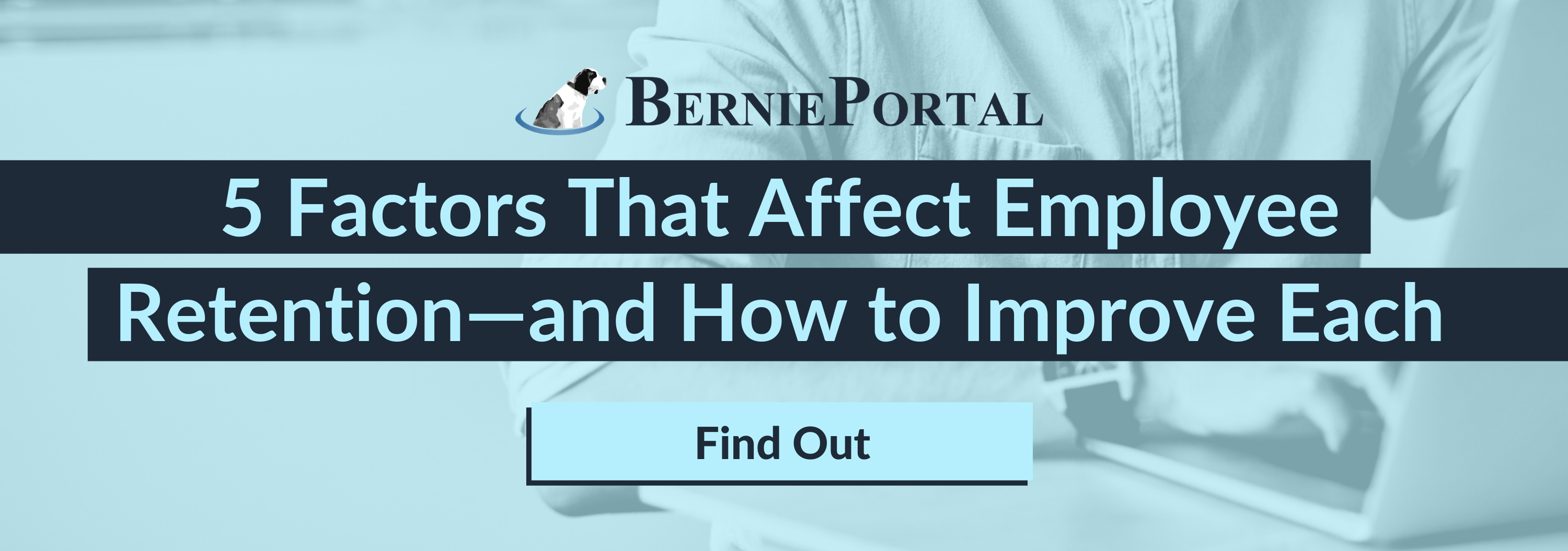
Written by
Lauren Brown
Lauren is an aPHR®-certified member of the Marketing team at Bernard Health. She writes about healthcare insights, employment law, and HR solutions.
What Childcare Issues Do Employees Face and How Can Employers Help?

The coronavirus pandemic uprooted working families’ routines, with parents working from home, schools moving to remote learning, and daycare facilities closing their doors. Suddenly, working parents were left scrambling to figure out a solution to their lack of childcare options. With employees still reeling from this disruption in childcare, how can employers help?
What is the Current State of Childcare?
According to a study from the Harvard Business Review, nearly 20% of 2,500 working parents had to leave work or reduce their work hours solely because of the lack of childcare and merely 30% of all working parents had back-up childcare options. Additionally, the study pointed out, there were significant disparities between low and high-income households.
Without access to childcare, some parents were forced to decide whether or not they could continue working. According to the National Women’s Law Center, over 2.3 million women had to leave the labor force since the start of the pandemic. Some parents—especially single parents—didn’t have the option to leave their jobs, despite not having childcare options.
How Can Employers Help Working Parents?
Despite the developmental impact on the children and the negative economic impact the childcare crisis can have, figuring out childcare options remains the employee’s problem. The Harvard Business Review points out that it should be a “business problem,” stating that, “The sooner employers treat childcare with the same seriousness as health care and other aspects of businesses infrastructure, the faster employees can get back to full force.”
And while mid-sized organizations may not seem to have the same resources as large organizations to impact business infrastructure as a whole, here are some ways employers can directly support working parents:
1. Extend Telework Accommodations
Ultimately, it’s up to you and your team to decide whether or not to extend remote work operations. But, if you’ve already returned to the office, consider including a provision in your reopening plan about granting telework accommodations to parents with children stuck at home.
2. EAP Reminder
Remind your workers about the employee assistance programs (EAPs) that are provided by your organization. An EAP is a benefit that assists workers with personal or work-related problems and can include short-term counseling to handle stress and grief.
3. FSAs for Childcare
Dependent care FSAs are for expenses that are work-related – in other words, you must pay them so you (and your spouse if filing jointly) can work or look for work. Organizations can offer this option for working parents to set aside pre-tax dollars for everything from before school or after school care and licensed daycare centers and nursery schools, to qualifying care for dependent adults and summer day camps.
Additionally, the American Rescue Plan Act of 2021 introduced multiple provisions to provide assistance to organizations and individuals who have been impacted by COVID-19. One of those provisions included changes to dependent care FSA rules and limits, providing more flexibility for employers and their employees to use their funds. (Read more about those changes here.)
4. Make Work More Sustainable
Flexibility and work-life boundaries are paramount for parents to be able to make their careers sustainable even in “normal times,” but especially now. Employers should revisit productivity goals and performance review criteria that might’ve been in place before the pandemic.
Are there policies in place for expectations regarding email response times outside of work hours? Are there set meeting times so employees can plan out their days?
5. Provide On-Site Childcare or Other Childcare Resources
The Harvard Business Review points out that “providing childcare as a benefit may not provide the same corporate tax incentives as providing health care (yet), but when weighed against the costs of finding and hiring new employees, the investment in keeping parents employed by offering childcare proves its value.”
Whether it’s financial assistance for employees to find childcare while they work, an onsite or organization-sponsored childcare facility, provide assistance for working parents so that they don’t have to decide between caring for their children or showing up for work.
6. Revisit Your Parental Leave Policy
When combined with other benefits, paid parental leave can serve as a significant indicator of an organization’s company culture, impact employee satisfaction, and positively contribute to work-life balance for women.
Additionally, the Biden administration recently announced a new proposal that could reshape paid leave requirements for American employers. Dubbed the American Families Plan (AFP), this new policy promises to create a paid family and medical leave program for workers, among other key changes designed to support parents and women in particular. Read more about the proposed legislation here.

Written by
Lauren Brown
Lauren is an aPHR®-certified member of the Marketing team at Bernard Health. She writes about healthcare insights, employment law, and HR solutions.
Related Posts
We just wrapped up another phenomenal Weekdays with Bernie (WWB) Conference!
Employees are the heart and soul of an organization, and valuing their opinions can have...
HR parties of one already have an abundance of tasks to keep up with. From hiring to...
The talent search is no longer a skirmish or a battle. It’s a WAR! As a strategic HR...







Submit a Comment